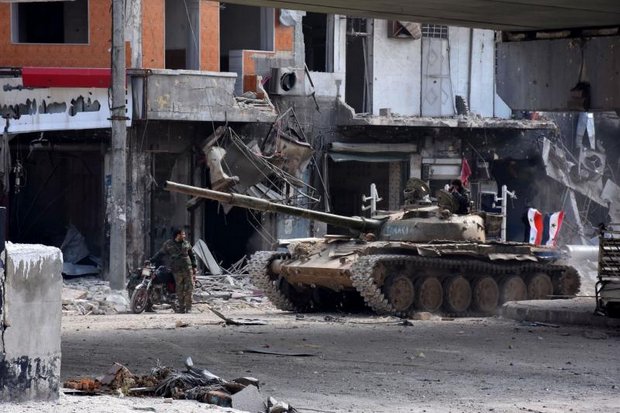
Did it cross your mind occasionally, in the past week, to wonder where all of the "250,000 civilians trapped in eastern Aleppo" have gone? As the area of the city under rebel control dwindled -- by Wednesday morning the Syrian regime's troops had recaptured three-quarters of it -- did you see massive columns of fleeing civilians, or mounds of civilian dead?
If several hundred thousand people were on the move, you would expect to be seeing video images of it. If they were fleeing into the enclave the rebels still hold (to escape the evil Syrian army), you would expect the rebels to give us dramatic images of that. They certainly gave us footage of every civilian killed by Russian bombing in eastern Aleppo over the past three months.
And if hundreds of thousands or even just tens of thousands of civilians were fleeing for safety into government-held territory, you would expect the regime's propagandists to be making equally striking images available. "Look!" they would say. "The civilians really loved President Bashar al-Assad all along."

Gwynne Dyer is an independent journalist whose articles are published in 45 countries.
Or maybe the civilians are all dead. Stephen O'Brien, the UN's Undersecretary-General for Humanitarian Affairs, warned just a week ago that if Mr Assad's forces went on advancing, then "the besieged parts of eastern Aleppo" would become "one giant graveyard". So where are those quarter-million bodies? Or even a few thousand bodies? That's kind of hard to hide.
Here's a radical thought: Have most of those quarter-million people suddenly become invisible because they were never really there in the first place?
There were certainly a significant number of civilians trapped with the rebels: you saw them crying and shaking their fists every time the Russians bombed another hospital. But even then, did you sometimes think how strange it was that the Russian air force never seemed to bomb anything but hospitals? Where's the strategic sense in that?
Well, here's a clue. There were no foreign journalists in eastern Aleppo. They were quite reasonably afraid of being kidnapped by one of the many rebel groups in the city and held for ransom -- or accused of being spies and ritually slaughtered by one of the more extreme Islamist outfits.
All the reporting out of eastern Aleppo for the past three months has been what the rebel groups wanted us to see, and nothing else. And to them, the presence of large numbers of "defenceless civilians", the more the better, was their best protection against a full-scale onslaught by the regime.
So of course they gave us video of every civilian killed by a bomb, and greatly exaggerated the number of civilians in their part of the city, and almost never showed their own fighters.
There's no crime in this. It's the way propaganda works, and nobody fighting a war can afford to be too respectful of the truth. The real question is this: Why did the international media fall for it?
For months, what was obviously rebel propaganda has been shown by the world's media as if it were the impartial truth. Was it just laziness, or was it subservience to a political agenda set by the West and its main allies in the Middle East? A bit of both, probably.
The United States, Saudi Arabia and Turkey were all determined to see the overthrow of Bashar al-Assad's regime, even if it did take six years of civil war. And even though they didn't agree on what they wanted to replace it with.
Washington pursued the dream of a democratic, secular Syria. Riyadh and Ankara wanted a decisive victory by the Sunni Arab majority (about 60-65% of the population) and an authoritarian Islamic state. But they all agreed on the need to overthrow Mr Assad, and left the rest for later.
Syrians from the start were much more ambivalent. Few loved the Assad regime, which was repressive and brutal. But many Syrians -- including many Sunni Muslims, especially in the cities -- saw the regime as their only protection against the triumph of an even nastier Islamist dictatorship.
There was never a mass uprising in Aleppo against the regime. Various rebel groups from the overwhelmingly Sunni rural areas around Aleppo stormed into the city in 2012 and won control over the eastern half, but it was never clear that the local residents were glad to see them.
On the other hand, it was not a good idea to look too unhappy about it, so over the next four years a great many people left the rebel-held part of the city, whose population gradually dwindled to -- well, we don't know exactly how many remained by this year, but it was certainly not a quarter-million or anywhere near it.
And it would appear that when the Syrian army retook most of eastern Aleppo in the past week, most of those people just stayed in their homes and waited to be "liberated". Some of them will be terrified of being arrested and tortured, especially if they collaborated with the rebels even under duress. And others will simply be relieved that it's over.
